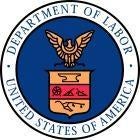I had the opportunity to visit Rochester, New Hampshire last week. It is a small, quiet city of about 30,000 tucked in the eastern corner of the state. It also happens to be the site of one of the most exciting and forward thinking community college-employer collaborations I’ve seen during my travels across the country.

Deputy Secretary Harris (third from left) visits the future site of Great Bay Community College’s Advanced Training Center with representatives from Safran USA, GBCC President Will Arvelo, and Rochester Mayor TJ Jean.
Last September, the Labor Department awarded nearly $20 million to New Hampshire’s Community College System as part of the TAA CCCT grant funding. Great Bay Community College (GBCC) is using its portion of the funds to build a state of the art Advanced Training Center in vacated storefronts in Lilac Mall. Beginning next year, cutting-edge training for jobs in advanced manufacturing will be available to New Hampshire workers and students in a storefront that once housed a Mattress Discounters and a Blockbuster Video.
The new training center is critical to economic development in the Rochester area. Among GBCC’s employer partners in the training program are Albany Engineered Composites (AEC) and Safran USA – two advanced manufacturing companies that create essential parts for next-generation airline jet engines. Safran has multiple offices in Europe and Asia with more than 60,000 employees across the globe, but they’ve decided to build their newest plant there. Why Rochester? AEC and Safran management told me a major factor was that GBCC and New Hampshire’s community college system can assure a reliable pipeline of skilled workers who can succeed in advanced, precision manufacturing. Both companies have been involved in shaping the curriculum that GBCC will deliver to workers and students in the Lilac Mall training facility.

Harris views the construction site where Safran USA/AEC is building a new 340,000 square facility to manufacture parts for a next-generation jet engine.
Safran and AEC are creating jobs that will remain in the Rochester community for the foreseeable future – their investment in the new facility almost assures it. Building the facility alone has already created jobs for 250 local workers, and Safran and AEC expect to hire at least 400 new full-time employees when they begin full production of the new engine parts.
During my visit, I also toured AEC/ Safran’s existing facility, which is adjacent to the new site. The engine parts they manufacture at that plant will create more durable and efficient engines that are 30% lighter than today’s engines. Planes will fly faster, conserve fuel, and produce fewer emissions.
Seeing international companies like Safran and AEC so eager to expand production in the U.S. – insourcing jobs for U.S. workers – strongly suggests to me that many in the business community are looking for opportunities just like this one. In the last 29 months, the private sector has created 4.5 million new jobs. More than half a million of those jobs are in the manufacturing sector. That number can continue to grow, and become one engine of a thriving U.S. economy, as long as we can continue to invest in American workers’ skills. That’s exactly what I saw in Rochester – and what I’ve seen in other cities and states around the country. Sometimes all it takes is a little support from the U.S. Department of Labor to get a cutting-edge job training program off the ground.
Seth Harris is the Deputy Secretary of Labor.


 />i
/>i

